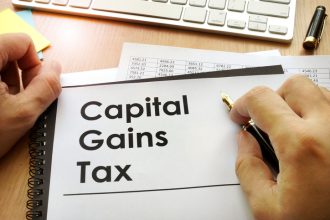We’re taught that the path to financial success is to work hard, be disciplined with savings, and maybe invest. Then, you’ll have enough to retire within a few decades.
Society instills this idea from a young age: go to school, get a high-paying job, and retire—it’s what they call the American Dream.
This is a sad lie society teaches us. The truth is, we could achieve so much more by working for ourselves as entrepreneurs.
While the traditional path of climbing the corporate ladder as a W-2 employee offers stability through consistent paychecks, it keeps you stuck in the rat race.
If you break free from this norm and think creatively, you can achieve financial independence much faster.
The journey isn’t easy, and it’s not for everyone. But for those willing to make the sacrifices, entrepreneurship offers a far more promising route to achieving financial success.
Here is why entrepreneurs can achieve financial freedom faster than W-2 employees:
1. Entrepreneurs Can Build Wealth Tax-Free
As an entrepreneur, you can avoid taxes by reinvesting your earnings back into your business instead of taking it as personal income.
This is where the stark contrast lies: employees are doomed to pay taxes on their earnings, while entrepreneurs can reinvest their would-be profits into their business, forcing value into the business tax-free.
For example, let’s say my business could have had $200,000 in profits for the year.
But instead of taking that $200,000 as profit and getting taxed on it, I hired additional people, paid payroll, and incurred other business expenses.
I reinvested it into my business, building an asset like my website, Finance Strategists, which I own and could sell one day.
By doing this, those profits wouldn’t technically be profits yet, so I do not need to pay any taxes on them. But I would be able to grow the business’s value.
This is true of any business.
If a grocery store owner buys $100,000 worth of inventory before the end of the year because he’s anticipating a large profit, that inventory is still part of his wealth.
Instead of having it in cash, he now has $100,000 worth of products he owns and will not pay tax on, assuming he plans to sell within the year as a short-term asset.
Essentially, he’s $100,000 wealthier, but his wealth is now in the form of inventory rather than cash.
As long as you can convert cash into something tangible that you own and control, you’re building your wealth tax-free.
This strategy allows entrepreneurs to grow their businesses and wealth by reinvesting earnings into assets that will generate future revenue while deferring tax liabilities.
2. Additional Tax Breaks for Entrepreneurs
Even if the earning potential of entrepreneurs and employees were the same (which they’re not), business owners can benefit from various tax strategies that can reduce their tax liabilities—opportunities not available to employees.
For example, if you own an S Corporation, you can take a modest salary and receive the remaining business earnings as capital distributions, taxed at a lower rate than W-2 income.
To illustrate further how this might work, imagine two individuals, both filing single and earning $200,000 annually.
One is a W-2 employee with $200,000 of ordinary income, and the other owns an S corporation, receiving a $50,000 salary and $150,000 in capital distributions.
The W-2 employee, earning the full $200,000, would likely fall into the 32% federal income tax bracket. Assuming the standard deduction for 2024, this translates to roughly $64,000 in federal income taxes.
The entrepreneur, on the other hand, will only pay ordinary income tax on the $50,000 salary, and will instead pay a 15% rate on the $150,000 taken as capital distributions.
There are some additional taxes for self-employment, FUTA, and SUTA, but overall the entrepreneur will pay about $20,000 less tax in this scenario.
In addition to being able to have a lower starting amount through incurring expenses, as illustrated previously, entrepreneurs can also be taxed at a lower rate by taking capital distributions rather than ordinary income.
3. Entrepreneurs Can Reach Financial Freedom Through Passive Income Rather Than A Giant Nest Egg
If you are an employee, your only path to financial freedom and not having to work is saving up enough money to live off the investments from that money.
Entrepreneurs, on the other hand, can reach financial freedom once they are generating enough passive income to live on.
This is a crucial distinction to make.
Let’s delve into the numbers with the 4% rule for retirement. This rule suggests you can live off 4% of your nest egg annually.
For instance, if you and your family need $100,000 a year to live, that is 4% of $2.5 million.
So, to reach financial freedom as an employee, you’d need to save $2.5 million (post taxes) to live off the proceeds or investments of that nest egg.
However, entrepreneurs can either aim for that nest egg, which, due to tax benefits and other advantages, is more attainable, or they can achieve financial freedom through passive income streams.
Here’s a practical example to illustrate this:
Suppose your monthly cost of living is $8,000. If you can generate $8,000 per month in passive income, you achieve financial independence.
Let’s say you decide to run Airbnbs. If each property nets you $400 per month, you’d need 20 Airbnbs to generate $8,000 in passive income.
But what if you prefer truly passive income and don’t want to manage these properties yourself?
You’d hire a property manager, which would impact your profits.
Let’s say with a property manager, each property nets you $250 per month instead. In this case, you’d need 32 Airbnbs to achieve your $8,000 monthly income goal.
I’d argue that not only is it significantly easier to achieve a $2.5 million nest egg as an entrepreneur rather than as an employee, it’s even easier to achieve the necessary passive income to officially earn the title “financially independent.”
4. Entrepreneurs Have Scalability And Unlimited Income Potential
Perhaps the most enticing aspect of entrepreneurship is the potential for unlimited income.
Successful businesses can scale rapidly, leading to exponential growth in revenue and profits.
Unlike W-2 employees, who are typically limited by incremental raises averaging a measly 4% for 2024, entrepreneurs who identify a winning business model can experience a meteoric rise in income.
It’s not uncommon for a business owner to generate over $1 million in revenue—that could be a pool cleaner with a decent client base, a dentist with his own practice, or in my case, a digital marketing agency with a handful of good clients.
Making $1 million a year would likely make no news since it’s not an impressive number for a business owner.
But can the same be said for W-2 employees? How many employees do you know make over $1 million a year?
The Bureau of Labor Statistics reports the highest median pay of any occupation to be around only $240,000.
Of course, if entrepreneurship were that simple, everyone would go down this path, and the main argument against entrepreneurship is its perceived risk.
While risking lots of capital is true for asset-heavy businesses requiring significant upfront costs, it’s less of a concern for service-based companies.
Examples include freelancing, plumbing, or landscaping. The risk in these fields is relatively similar to an employee, who is also at risk of being let go.
As an entrepreneur, especially in a service-based business, you have more control, earning potential, and I’d argue, more security in some cases since you’ll be the last person you fire from your business.
A few good years running a successful business could earn you millions, offering a path to financial independence far quicker than the slow and steady route of traditional employment.
The Bottom Line
Entrepreneurship is hands down a better path to financial freedom than traditional W-2 employment.
Business owners enjoy superior tax benefits, can build passive income streams, and have the potential for unlimited income.
At the same time, it’s important to acknowledge that entrepreneurship has its risks.
Starting and running a business involves uncertainty, long hours, and the potential for financial loss.
However, the potential rewards in terms of financial independence and wealth creation are far greater than those associated with a nine-to-five job.
Entrepreneurs who are willing to take calculated risks, work diligently, and persevere through challenges can reap the benefits of financial freedom and create a life on their own terms.
While the path may be more demanding, the destination is infinitely more rewarding.
If you are dissatisfied with the rate you will achieve financial independence through the limitations of traditional employment, entrepreneurship may be the answer you’ve been looking for.
Read the full article here
















